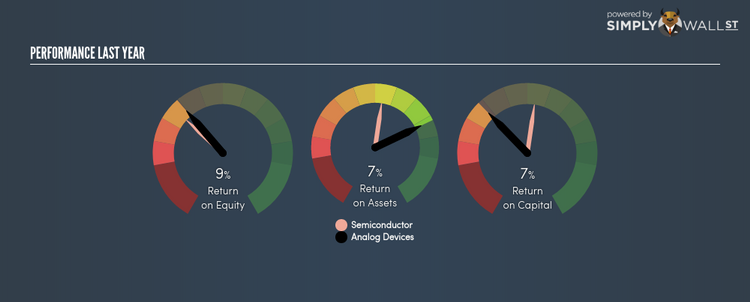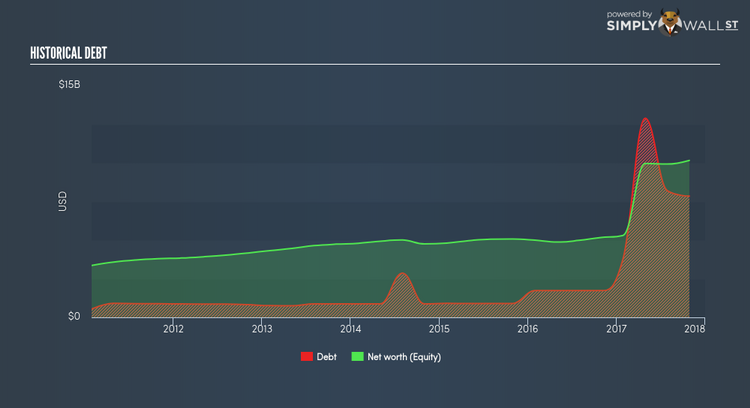What You Must Know About Analog Devices Inc’s (undefined:ADI) ROE

With an ROE of 9.49%, Analog Devices Inc (NASDAQ:ADI) outpaced its own industry which delivered a less exciting 8.36% over the past year. Superficially, this looks great since we know that ADI has generated big profits with little equity capital; however, ROE doesn’t tell us how much ADI has borrowed in debt. We’ll take a closer look today at factors like financial leverage to determine whether ADI’s ROE is actually sustainable. Check out our latest analysis for Analog Devices
Breaking down Return on Equity
Firstly, Return on Equity, or ROE, is simply the percentage of last years’ earning against the book value of shareholders’ equity. For example, if the company invests $1 in the form of equity, it will generate $0.09 in earnings from this. In most cases, a higher ROE is preferred; however, there are many other factors we must consider prior to making any investment decisions.
Return on Equity = Net Profit ÷ Shareholders Equity
Returns are usually compared to costs to measure the efficiency of capital. Analog Devices’s cost of equity is 10.64%. Since Analog Devices’s return does not cover its cost, with a difference of -1.15%, this means its current use of equity is not efficient and not sustainable. Very simply, Analog Devices pays more for its capital than what it generates in return. ROE can be dissected into three distinct ratios: net profit margin, asset turnover, and financial leverage. This is called the Dupont Formula:
Dupont Formula
ROE = profit margin × asset turnover × financial leverage
ROE = (annual net profit ÷ sales) × (sales ÷ assets) × (assets ÷ shareholders’ equity)
ROE = annual net profit ÷ shareholders’ equity
The first component is profit margin, which measures how much of sales is retained after the company pays for all its expenses. Asset turnover reveals how much revenue can be generated from Analog Devices’s asset base. And finally, financial leverage is simply how much of assets are funded by equity, which exhibits how sustainable the company’s capital structure is. Since ROE can be inflated by excessive debt, we need to examine Analog Devices’s debt-to-equity level. At 77.26%, Analog Devices’s debt-to-equity ratio appears sensible and indicates the above-average ROE is generated from its capacity to increase profit without a large debt burden.
What this means for you:
Are you a shareholder? ADI exhibits a strong ROE against its peers, however it was not high enough to cover its own cost of equity this year. Since its high ROE is not fuelled by unsustainable debt, investors shouldn’t give up as ADI still has capacity to improve shareholder returns by borrowing to invest in new projects in the future. If you’re looking for new ideas for high-returning stocks, you should take a look at our free platform to see the list of stocks with Return on Equity over 20%.
Are you a potential investor? If you are considering investing in ADI, basing your decision on ROE alone is certainly not sufficient. I recommend you do additional fundamental analysis by looking through our most recent infographic report on Analog Devices to help you make a more informed investment decision.
To help readers see pass the short term volatility of the financial market, we aim to bring you a long-term focused research analysis purely driven by fundamental data. Note that our analysis does not factor in the latest price sensitive company announcements.
The author is an independent contributor and at the time of publication had no position in the stocks mentioned.


